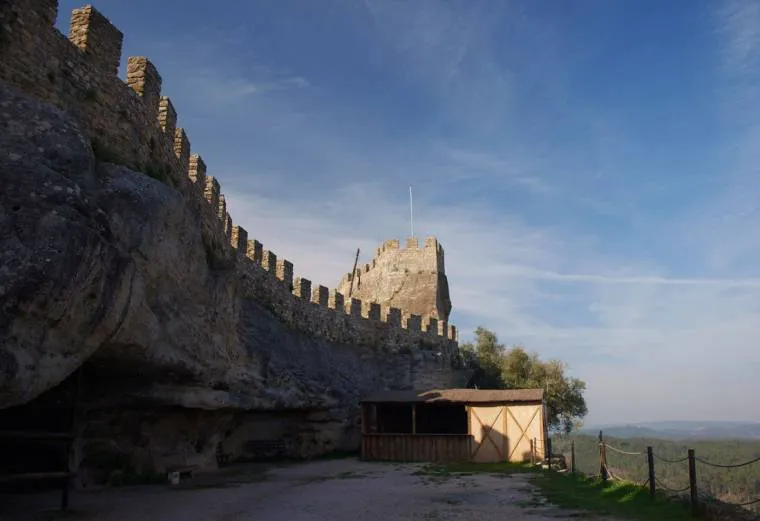Welcome Back Vagabonds!
Welcome to “Atypical Vagabond,” a portal to a realm where boundaries blur and conventional paths diverge. Here, we delve into the world of unconventional exploration and celebrate the art of wandering without constraints. Join us as we uncover hidden gems, unravel the tales of unconventional nomads, and delve into the transformative experiences that await those who dare to embrace the call of wanderlust.
A strong desire for freedom often arises in a busy world of daily routines and societal pressures. We become fascinated by the exciting appeal of unfamiliar places, the mysterious call of undiscovered destinations, and the life-changing influence of travel. In these instances, we awaken the spirit of the unconventional traveler — the wanderer who desires to explore the world and embark on a journey of self-discovery and personal freedom.
Tomar is a town in Portugal’s Centro region, situated on the banks of the Nabão River. Tomar is a beautiful town with a lot to offer visitors. If you are interested in medieval architecture, Portuguese history, or simply enjoying a charming Portuguese town, then Tomar is worth a visit. It is known for its well-preserved medieval architecture, including the Convento do Cristo (Convent of Christ), a UNESCO World Heritage Site. North of Tomar and South of Coimbra is another castle in Penela.
Nestled in the heart of Portugal, Penela Castle, locally known as “Castelo de Penela,” is a venerable fortress withstood the test of time, bearing witness to centuries of history, conquests, and cultural evolution. Let’s journey through the annals of Penela Castle’s rich and storied past.
Penela’s Early Foundations (12th Century)

Penela Castle’s history can be traced back to the 12th century when Portugal was asserting its independence from the Moorish rule. Built atop a hill overlooking the tranquil town of Penela, the castle was strategically positioned to defend the region against Moorish invasions.
Moorish Occupation
During its early years, the castle fell under Moorish control. However, in the 12th century, the Christian Reconquista led by Dom Afonso Henriques, the first king of Portugal, brought Penela Castle back into Christian hands.
Portuguese Expansion (13th – 14th Century)
Over the next few centuries, Penela Castle witnessed a remarkable transformation that reflected the evolving dynamics of medieval Europe. The castle’s significance as a military stronghold became increasingly apparent, prompting a series of extensive renovations and expansions that would shape it into a formidable and multifaceted fortress.
As the medieval period progressed, so did the castle’s architectural ambitions. The initial spartan military fortress underwent a metamorphosis that left its mark on the landscape. Skilled craftsmen and architects worked tirelessly to enhance the castle’s defensive capabilities and adapt it to the changing nature of warfare.
One of the most significant additions during this period was the construction of a keep, a towering central structure that served as the heart of the castle’s defenses. Rising above the surrounding walls and buildings, the keep provided a strategic vantage point from which defenders could survey the landscape, coordinate their efforts, and repel any potential threats.
In addition to the keep, towers were strategically placed along the castle’s walls. These imposing structures added to the castle’s grandeur and served as vantage points for archers and sentinels. Their commanding height allowed archers to rain arrows upon approaching foes, effectively extending the reach of the castle’s defenses.
The defensive walls themselves underwent expansion and reinforcement. Thick stone walls were built or fortified, often featuring battlements and crenellations that provided cover for archers during battles. A moat may have been dug around the castle, adding an extra layer of protection against ground-based assaults.
IV. The Age of Exploration (15th – 16th Century)
As Portugal embarked on its Age of Exploration, Penela Castle’s strategic importance diminished. It gradually transitioned from a military stronghold to a residential estate. The castle’s architecture began to reflect the prevailing styles of the time, with Manueline and Renaissance design elements.
V. Decline and Abandonment (17th – 20th Century)
The castle’s fortunes took a significant downturn during the 17th century as the winds of change swept across Portugal. At this point in history, the once-mighty fortress began to suffer from neglect and a lack of maintenance. The effects of time and weather began to make their mark, slowly eroding the once-majestic edifice. Cracks appeared in the sturdy stone walls, and the wooden structures within the castle started to decay.
As the 18th century dawned and gave way to the 19th century, Penela Castle’s fate seemed sealed. With its military significance dwindling, the castle was gradually forsaken by the inhabitants of the region. The echoes of centuries of history faded, and the court stood as a silent sentinel to a bygone era.
During this abandonment period, nature seemed intent on reclaiming what was once hers. Ivy and moss crept up the castle’s walls, forming a verdant cloak that draped over the stones. This green invasion gave the castle a haunting, almost mystical appearance as if it had become one with the surrounding forest. Trees and shrubs sprouted from the crevices, their roots burrowing deep into the ancient stonework, hastening the castle’s gradual fusion with the natural world.
Restoration and Preservation
In the mid-20th century, efforts to preserve and restore Penela Castle began. The Portuguese government recognized its historical significance, and restoration work aimed to return the castle to its former glory.
Today, Penela Castle is a testament to Portugal’s historical legacy, allowing visitors to step back in time and explore its well-preserved walls, towers, and courtyards. It also serves as a cultural and educational center, hosting events and exhibitions celebrating the region’s rich history.
As we conclude our journey through the history of Penela Castle, we are reminded of the enduring spirit of heritage preservation. This medieval stronghold tells the tale of Portugal’s past and invites modern-day travelers to connect with history, culture, and the captivating landscapes surrounding it. Penela Castle is a living monument to the resilience of time, a sentinel guarding the secrets of the ages.
Subscribe
Are you an avid traveler seeking inspiration for your next adventure? Look no further than the Atypical Vagabonds newsletter. By subscribing to our newsletter, you gain access to a treasure trove of travel tips, destination guides, and captivating stories from around the globe. Our expertise in exploring off-the-beaten-path destinations. We offer a refreshing perspective on travel, encouraging you to embrace the unconventional and discover unique experiences. Join the community today and let our wanderlust-inducing content inspire you. Therefore, you can embark on extraordinary journeys. Subscribe to receive their latest updates directly in your inbox and never miss a travel adventure again.
Donations
Love what you’re seeing on Atypical Vagabond? Help us keep the adventures coming! Consider donating through PayPal’s secure payment system. Every contribution goes a long way in fueling our mission to bring you more thrilling content and unforgettable experiences. Join us in shaping the future of travel—donate today!



